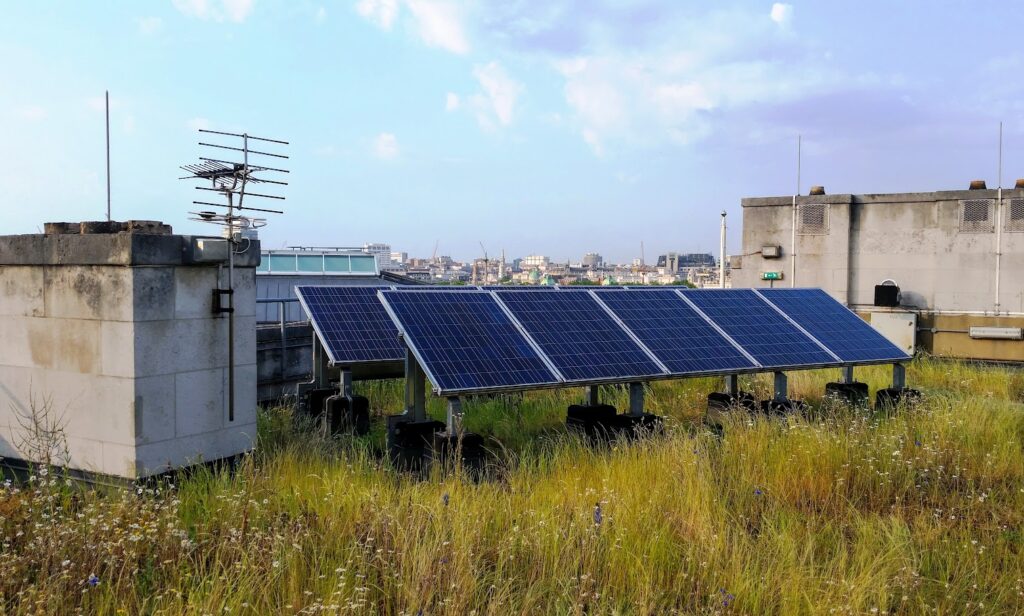Sodium-ion batteries set to diversify energy storage industry

Solar energy on a London rooftop. Image (C) Tim Sandle
Sodium-ion batteries are being developed due to their potential costs, safety, sustainability, and performance characteristics over traditional lithium-ion batteries. These batteries can be made with widely available and inexpensive materials, with sodium being significantly more abundant than lithium.
Sodium-ion batteries can use aluminium for the anode current collector instead of copper, which is used in lithium-ion cells. This can reduce the supply chain risks.
The batteries consist of a cathode based on a sodium-based material, an anode and a liquid electrolyte containing dissociated sodium salts in polar protic or aprotic solvents. During charging, the battery chemistry causes sodium ions move from the cathode to the anode. This occurs as electrons travel through the external circuit. During discharge, the reverse process takes place.
According to analyst Shazan Siddiqi, Senior Technology Analyst at IDTechEx, there are also safety advantages with sodium-ion batteries being less hazadous than lithium-ion batteries as they can be stored at zero volts.
The process for making sodium-ion batteries is very similar to that of lithium-ion, meaning that the scale-up of the technology can benefit from existing lithium-ion battery production lines.
One disadvantage is in terms of performance, the energy density for sodium-ion batteries is lower than high-energy lithium-ion cells, which use nickel. This balanced by sodium-ion batteries being of a lower cost. It has been estimated that at scale, a sodium ion battery with a layered metal oxide cathode and hard carbon anode will have approximately 25 to 30 percent lower material costs than a lithium battery.
In terms of the development trajectory, it is predicted that sodium-ion batteries could reach pack densities of nearly 150 watt-hours per kilogram by 2025.
While sodium is a heavier element than lithium, with an atomic weight 3.3 times greater than lithium (sodium 23 g/mol vs lithium 6.9 g/mol), the chemical quantity in a battery only accounts for a small amount of cell mass.
For availability, sodium is one of the most abundant and geographically available resources, being found in rock salts and brines globally. Sodium is cheaper to extract and process, as well as being more abundant than lithium, leading to sodium being less susceptible to resource availability issues and to price volatility.
The IDTechEx report compares the costs of different lithium-ion and sodium-ion battery configurations and concludes there are potential cost advantages, although this depends on the chemistry being used.
Sodium-ion chemistry is not the answer for all applications and the technology will complement rather than displace existing and future lithium-ion technologies the report “Sodium-ion Batteries 2024-2034: Technology, Players, Markets, and Forecasts”, finds.
Sodium-ion batteries set to diversify energy storage industry
#Sodiumion #batteries #set #diversify #energy #storage #industry





